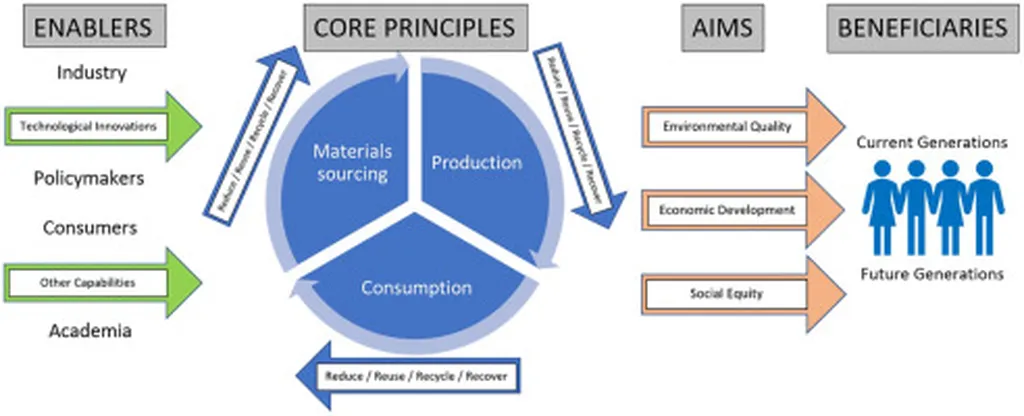In the quest for sustainable societies, the circular economy (CE) has emerged as a beacon of hope, promising to reduce waste and maximize resource efficiency. However, the practical implementation of regional circular economies (RCEs) has remained a puzzle. A recent study published in *Cleaner Environmental Systems* and led by Ana Maria Caceres Ruiz from Curtin University’s Sustainability Policy (CUSP) Institute, offers a roadmap to navigate this complexity, with significant implications for sectors like agriculture.
The research conducts a three-step integrative review and gap analysis, revealing that successful RCE implementation requires integrated, place-based approaches. This means understanding local contexts, such as resources, secondary materials, and key stakeholders, and developing tailored policies. For the agriculture sector, this could translate into innovative strategies that repurpose agricultural waste into valuable resources, reducing costs and environmental impact.
“Successful RCE implementation requires integrated, place-based approaches,” says lead author Ana Maria Caceres Ruiz. “This includes clearly demarcating regional boundaries, assessing local contexts, and developing policies that support regional clusters and knowledge transfer.”
The study highlights the need for robust monitoring mechanisms to adapt and improve initiatives while assessing climate impacts. For instance, in agriculture, this could mean tracking the lifecycle of resources to ensure they are being used efficiently and sustainably. The research also underscores the importance of territorial governance strategies that engage diverse stakeholders, transition brokers, and interregional collaborations.
Moreover, the gap analysis reveals critical research needs, such as developing and testing circular strategies tailored to key local economic specializations like agriculture. It also emphasizes the need to bridge the divide between sufficiency, efficiency, and innovation ideals and their practical uptake. For agriculture, this could mean finding practical ways to reduce resource use, increase efficiency, and foster innovation in waste management.
The study also calls for addressing the underutilization of regenerative, reduce, and reuse strategies. In agriculture, this could involve promoting practices that regenerate soil health, reducing the need for chemical inputs, and reusing agricultural waste as compost or animal feed.
As we look to the future, this research could shape developments in the field by providing practical insights for ground-level RCE implementation. It also highlights overlooked research areas essential for advancing circular transitions in regional settings. For the agriculture sector, this could mean a shift towards more sustainable and profitable practices, contributing to regional development and sustainability.
In essence, this study is a call to action for policymakers, researchers, and industry leaders to collaborate and drive the transition towards regional circular economies. By doing so, they can unlock the potential of sectors like agriculture, creating a more sustainable and prosperous future for all.

